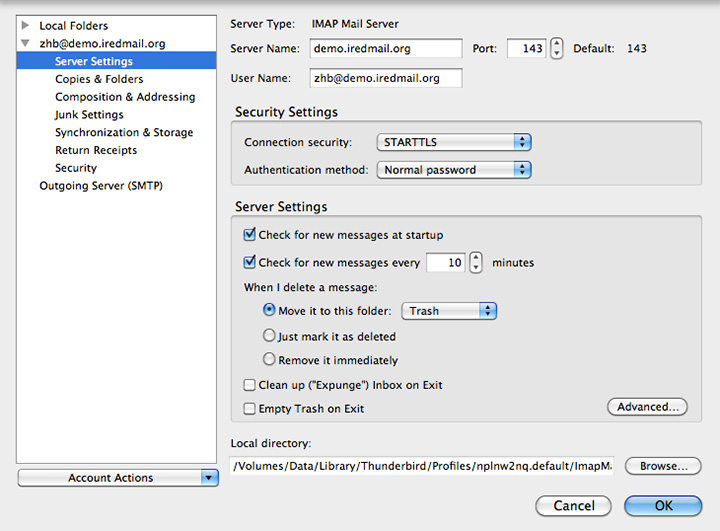In today’s digital age, managing your email accounts is crucial to staying organized and connected. An excellent way to manage your Duke email is by using Thunderbird, an open-source IMAP/POP client that simplifies the process of accessing your email on various devices. In this article, we will walk you through a step-by-step procedure to help you access your Duke email easily through Thunderbird.
Understand Duke’s Email System
Duke University offers Microsoft Office 365 for its faculty, staff, and students as their primary email and calendaring platform. This cloud service provider not only delivers robust email functionality but also provides additional features such as Microsoft Teams integration. To successfully use your Duke email in Thunderbird, you should be familiar with the required server settings, which include the server name (mail.cs.duke.edu) and port configuration.
Access Duke Email in Thunderbird: A Step-by-Step Guide
To begin setting up your Duke email on Thunderbird, follow these simple steps:
- Download and install Thunderbird: If you haven’t already, download the Thunderbird app from the official website and install it on your device.
- Launch Thunderbird: Open the Thunderbird app on your machine.
- Set up a new account: Click on “Tools” in the menu bar and select “Account Settings.” In the Account Settings window, click “Add Mail Account” found at the bottom-left corner of the screen.
- Enter your details: Input your real email address associated with your Duke account, your full name, and your password. Click “Continue.”
- Configure server settings: Set up the incoming and outgoing server information. For the Incoming server, make sure to choose IMAP and enter “mail.cs.duke.edu.” Likewise, for the Outgoing server (SMTP), set the server name as “mail.cs.duke.edu.”
- Set up port configurations: Depending on your security settings, you should configure the appropriate ports for the incoming and outgoing servers. Generally, you will use Port 993 with SSL/TLS for the incoming server and Port 587 with STARTTLS for the outgoing server.
- Test and finish: Once you have entered all the required details, click “Done” to test the account setup. If successful, the new Duke email account should now be available in Thunderbird.
Troubleshooting Email Issues
If you experience any issues while setting up your Duke email in Thunderbird or face difficulties with sending/receiving emails, there are a few potential solutions:
- Double-check the incoming and outgoing server names for accuracy.
- Re-enter the correct password for your Duke email account.
- Ensure that the specified port numbers and security protocols are correct.
- Verify that your internet connection is stable and reliable.
If problems persist, consider contacting Duke University’s IT support team for further assistance.
Alternative Ways to Access Duke Email
If you prefer not to use Thunderbird or encounter issues with the app, there are other methods available to access your Duke email account:
Webmail Access
The most straightforward way to access your Duke email is through the university’s webmail system. You can log in directly from Duke University’s website by navigating to the Email & Calendaring tab located at the top right corner of the page.
Gmail App
For those who use Gmail as their primary email service, you can add your Duke email account to the Gmail app for consolidated access. Adding a new IMAP account in Gmail’s settings will enable you to manage your Duke emails alongside other accounts in the Gmail interface.
SSH Terminal Session
For users with more technical knowledge, you can access your Duke email using an SSH terminal session. By connecting to login.soc.duke.edu and logging in with your Linux UserID and password, you can manage your email using a shell prompt. Furthermore, you can set up email forwarding using the “pico .forward” command followed by the desired forwarding address.
In Conclusion: Maintaining Seamless Connectivity with Duke Email
By setting up your Duke email account on Thunderbird, you are empowered with greater flexibility and accessibility to manage your emails across devices. The step-by-step guide provided here demonstrates how easy it is to integrate your account into the Thunderbird app. Additionally, alternative methods such as webmail access and using the Gmail app offer even more convenience for staying connected with your Duke email communications. Embrace these tools to maintain seamless connectivity and ensure you never miss important updates from Duke University again!


